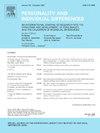使用潜在轮廓和网络分析来表征音乐快感缺乏症个体:一项探索性研究
IF 2.6
2区 心理学
Q1 PSYCHOLOGY, SOCIAL
引用次数: 0
摘要
音乐快感缺乏症的特点是无法从音乐中获得快乐,这是一种相对未被充分探索的快感缺乏症。目前尚不清楚它是否构成一种独特的条件或更广泛的快感缺乏结构的组成部分。本研究旨在研究音乐快感缺乏症的潜在亚群,并探索其与其他形式的快感缺乏症的关系。共有3942名大学生完成了音乐、状态、身体、社会、预期性和圆满性快感缺乏症的自我报告问卷。采用潜在剖面分析(Latent profile analysis, LPA)识别潜在群体。通过网络分析探讨音乐快感缺乏症与其他类型快感缺乏症之间的相互关系。LPA确定了四组:重度音乐快感缺乏症、重度音乐快感缺乏症、重度音乐快感缺乏症和重度音乐快感缺乏症。与其他组相比,“高度音乐快感缺乏症组”表现出更严重的身体、社交、预期和圆满性快感缺乏症。网络分析揭示了音乐快感缺乏症与预期性和完成性快感缺乏症之间的密切联系。情绪调节是最中心的节点。在网络结构和整体强度方面,各组之间存在显著差异。这项研究为音乐快感缺乏症的独特特征及其与其他类型快感缺乏症的关系提供了新的见解,这可能会启发以音乐为基础的快感缺乏症治疗干预。本文章由计算机程序翻译,如有差异,请以英文原文为准。
Using latent profile and network analyses to characterize individuals with musical anhedonia: An explorative study
Musical anhedonia, characterized by the inability to derive pleasure from music, is a relatively underexplored form of anhedonia. It remains unclear whether it constitutes a distinct condition or a component of a broader anhedonia construct. This study aimed to examine potential subgroups of musical anhedonia and explore its relationships with other forms of anhedonia. A total of 3942 university students completed self-reported questionnaires assessing musical, state, physical, social, anticipatory and consummatory anhedonia. Latent profile analysis (LPA) was employed to identify potential groups. Network analysis was conducted to explore the inter-relationships between musical anhedonia and other types of anhedonia. LPA identified four groups: high musical anhedonia, low musical hedonia, musical hedonia, and musical hyperhedonia. The “high musical anhedonia group” showing more severe physical, social, anticipatory, and consummatory anhedonia compared to the other groups. Network analysis revealed strong connections between musical anhedonia and anticipatory as well as consummatory anhedonia. Mood Regulation was the most central node. Significant differences were observed in network structure and global strength across groups. This study provides new insights into the distinct profiles of musical anhedonia and its relationship with other types of anhedonia, which may inspire music-based therapeutic interventions for anhedonia.
求助全文
通过发布文献求助,成功后即可免费获取论文全文。
去求助
来源期刊

Personality and Individual Differences
PSYCHOLOGY, SOCIAL-
CiteScore
8.50
自引率
4.70%
发文量
577
审稿时长
41 days
期刊介绍:
Personality and Individual Differences is devoted to the publication of articles (experimental, theoretical, review) which aim to integrate as far as possible the major factors of personality with empirical paradigms from experimental, physiological, animal, clinical, educational, criminological or industrial psychology or to seek an explanation for the causes and major determinants of individual differences in concepts derived from these disciplines. The editors are concerned with both genetic and environmental causes, and they are particularly interested in possible interaction effects.
 求助内容:
求助内容: 应助结果提醒方式:
应助结果提醒方式:


